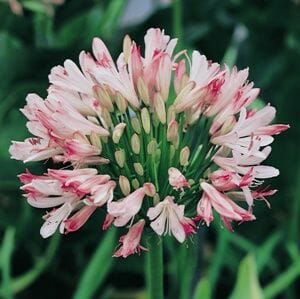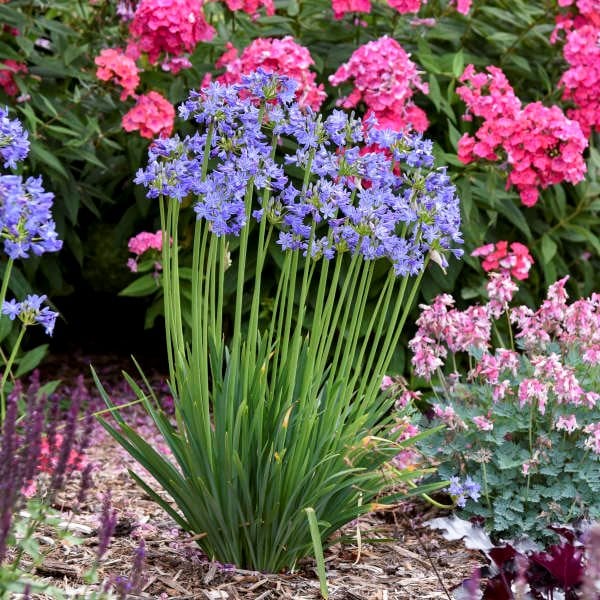Agapanthus Growing Conditions: Dirt, Sunshine, and Watering
Agapanthus Growing Conditions: Dirt, Sunshine, and Watering
Blog Article
Understanding the Art of Agapanthus Treatment: Important Actions for Healthy Growth and Lively Blooms
In the world of cultivation, the farming of agapanthus stands as a satisfying undertaking for those who look for to support these sophisticated blooming plants. From choosing the right variety to understanding trimming methods, the trip in the direction of cultivating thriving agapanthus plants is multifaceted and holds the essential to unlocking the complete capacity of these agricultural gems.

Picking the Right Agapanthus Variety

When picking the right Agapanthus range for your yard, take into consideration aspects such as environment viability, bloom color, and growth routine. Agapanthus, frequently called Lily of the Nile or African lily, can be found in a selection of shades ranging from shades of blue and purple to white. Select a flower color that complements your existing yard palette to create an unified landscape. Additionally, consider the climate in your area to ensure the Agapanthus range you choose can prosper in your certain problems. Some varieties are a lot more tolerant of cold temperature levels, while others prefer warmer climates. Recognizing the development behavior of various Agapanthus selections is critical for correct positioning within your garden. Some varieties have a clumping growth behavior, perfect for containers or boundaries, while others have a more spreading nature, suitable for ground cover or mass plantings. By carefully evaluating these variables, you can choose the ideal Agapanthus variety to boost the charm of your garden.
Perfect Planting Problems
Considering the optimum environmental demands is important for effective Agapanthus cultivation. Agapanthus prospers in well-draining soil with a somewhat acidic to neutral pH level. When growing, choose a place that receives full sunshine to partial shade. In hotter environments, giving some mid-day color can avoid scorching of the fallen leaves. Agapanthus plants are delicate to cool temperatures and must be protected from frost during winter season.
To guarantee healthy development and lively blooms, plant Agapanthus light bulbs at a deepness of regarding 2-4 inches and room them 8-12 inches apart. Including natural issue, such as garden compost, to the soil can boost water drainage and fertility, advertising durable root advancement. Mulching around the base of the plants assists maintain moisture and suppresses weed growth. Routine watering is critical, specifically throughout the growing season, to keep the dirt constantly wet however not waterlogged.
Watering and Feeding Tips
Preserving proper dampness levels and offering necessary nutrients are vital elements in the care program for Agapanthus plants. When it comes to watering Agapanthus, it is vital to strike a balance. These plants choose continually wet dirt but are vulnerable to root rot if overwatered.
Feeding Agapanthus is important for advertising healthy and balanced growth and respected blossoms. Apply a well balanced plant food, such as a 10-10-10 formula, in the very early spring as brand-new development arises. Repeat this application every 6-8 weeks throughout the growing season. Stay clear of extreme fertilizing, as it can cause rich foliage at the expenditure of blossoms. Always follow the supplier's guidelines for correct dilution and application approaches. By adhering to these watering and fertilizing suggestions, you can ensure your Agapanthus plants prosper and generate vibrant, lasting blossoms.
Trimming Methods for Agapanthus
Pruning Agapanthus plants at the proper times and with appropriate methods is important for preserving their wellness and promoting optimum growth and flowering. The suitable time to trim Agapanthus is in late winter season or early springtime before new growth arises. Beginning by eliminating any dead or yellowing leaves near the base of the plant. Cut them as short as possible without harming the emerging shoots.
Deadheading spent blossoms can likewise reroute the plant's energy right into producing more blooms instead than setting seeds. If you want to accumulate seeds for breeding, leave some blossoms to completely dry and mature on the plant.
Remember to utilize tidy, sharp tools to make accurate cuts and reduce the danger of presenting diseases. Agapanthus. Routine pruning will certainly help keep your Agapanthus looking healthy and balanced and cool Recommended Reading while making sure an abundant display screen of beautiful blooms
Managing Typical Pests and Diseases
After making sure correct trimming strategies for Agapanthus, it is necessary to deal with usual bugs and diseases that can impact the health and wellness and vigor of these plants. Agapanthus plants are normally hardy however can still drop target to particular problems. One usual pest that affects Agapanthus is the Agapanthus gall midge. This tiny, orange fly lays its eggs in the vegetation, leading to distorted growth and flower buds that fail to open. To fight this bug, trim and damage any kind of afflicted plant parts and consider using insecticidal soap.
One more usual issue is fungal leaf place, which offers as dark sores on the fallen leaves. To avoid fungal conditions, ensure excellent air blood circulation around the plants, avoid overhead watering, and remove any kind of contaminated fallen leaves he has a good point immediately. Additionally, Agapanthus plants can deal with origin rot if they are grown in badly draining dirt. To avoid this, plant Agapanthus in well-draining dirt and stay clear of overwatering. By being vigilant and taking punctual action against diseases and parasites, you can assist your Agapanthus plants grow and create vivid blossoms.

Conclusion
Finally, grasping the art of agapanthus treatment includes picking the right variety, offering suitable growing conditions, correct watering and fertilizing, appropriate trimming techniques, and dealing with usual insects and illness. By complying with these important steps, you can guarantee healthy growth and lively blossoms for your agapanthus plants. Bear in mind to regularly monitor and preserve your plants to promote their general wellness and longevity.
To make sure healthy and balanced growth and vivid flowers, plant Agapanthus bulbs at a deepness look at here of regarding 2-4 inches and area them 8-12 inches apart. By adhering to these watering and feeding pointers, you can guarantee your Agapanthus plants thrive and produce vivid, lasting flowers.
One typical parasite that impacts Agapanthus is the Agapanthus gall midge. In addition, Agapanthus plants can experience from root rot if they are grown in badly draining dirt. By following these essential steps, you can make certain healthy and balanced growth and dynamic blossoms for your agapanthus plants.
Report this page